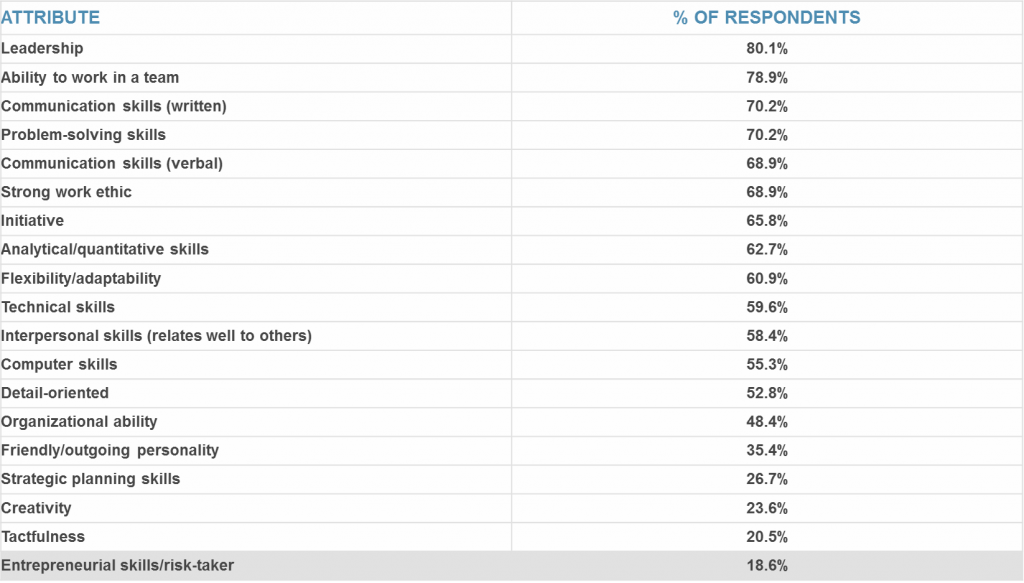We are currently preparing students for jobs that don’t yet exist … using technologies that haven’t been invented … in order to solve problems we don’t even know are problems yet.”
—Richard Riley, former Secretary of Education
This quote from former Secretary Riley rings truer than ever in our 21st-century world. As his quote suggests, students must be prepared for the fact that in their lifetimes, the job market, and what is necessary for professional success, will continuously change and evolve. Various sectors of industry will see huge growth in the coming decades, with an example being the recent statistics showing the increase in STEM jobs.
In order for students to be prepared to enter the future workforce, they must have a deep understanding of and be able to apply content knowledge. There is no doubt that academic content knowledge is part of a recipe for success. But information on its own will not be enough to help young adults successfully navigate and succeed in an ever-changing work landscape.
The National Association of Colleges and Employers conducted a survey in the fall of 2015 about the attributes that employers seek. The survey asked employers from a variety of fields what they consider to be the most important attributes of those seeking employment with their companies. Figure 1 below shows the results of that survey.
Figure 1:

These results provide a roadmap for educators of what students should be capable of when they leave school. However, for almost a decade now, educators and business people alike have noticed a disconnect.
A 2016 CBS news story quoted Kate Bardaro, vice president of data analytics at PayScale, sharing the findings of a survey conducted by her company, “We hear all the time about the ‘skills gap,’ the gap between the skills needed to succeed in the professional world and the skills with which young professionals leave college. The data we’ve collected show that even though their education may make recent college graduates feel prepared to enter the workforce, only half of the hiring managers agree with them; managers feel crucial skills in recent graduates are frequently lacking or absent.”.
Payscale’s findings are just one example of the mounting statistical and anecdotal evidence that exists which reinforces the idea that students are not as well prepared as they need to be for success in the real world. But the question remains, how can we change this?
The solution is to explicitly and purposefully embed 21st century and future-ready skill development into K – 12 curricula.
Here are 4 ways to build your students' future-ready skills:
- Include future-ready skill outcomes in assessments. The Partnership for 21st Century Skills recommends building future-ready skill outcomes into both summative and formative assessments. To do this, they encourage the inclusion of more performance-based assessment items that would require the use of a variety of 21st century skills in context, as well as the development of formative assessment rubrics and checklists that will help teachers “assess student mastery of 21st century skills in ways that impact, inform and improve learning in real time.”
- Design instruction in a way that supports achievements of those outcomes. Once desired 21st-century skill outcomes are translated into assessment items, districts and teachers should design instruction in a way that supports achievement of those outcomes. If summative assessments which incorporate these skill outcomes move toward the inclusion of performance-based items, so too should classroom experiences. Teachers and district curriculum teams can write their own performance-based tasks or utilize resources such as Defined STEM to select ready-made performance tasks that align with content standards and require the use of 21st-century skills.
- Creating a classroom environment that supports development of future ready skills and engages students is also critical. The Partnership for 21st Century Skills encourages teachers to examine the time blocks throughout the day as well as physical classroom setup, as those factors can influence students’ use of important skills like collaboration and communication.
- Additionally, modeling and encouraging classroom discussion around each skill can help students better grasp not just the definition of each skill, but what it might look and sound like in practice as well. This is especially pertinent at the elementary level, where students may be purposefully engaging in these skills for the first time.
The shift toward explicitly teaching and assessing 21st-century and future-ready skills gives students opportunity to develop these skills in the classroom and better prepare them to excel as working members of society.